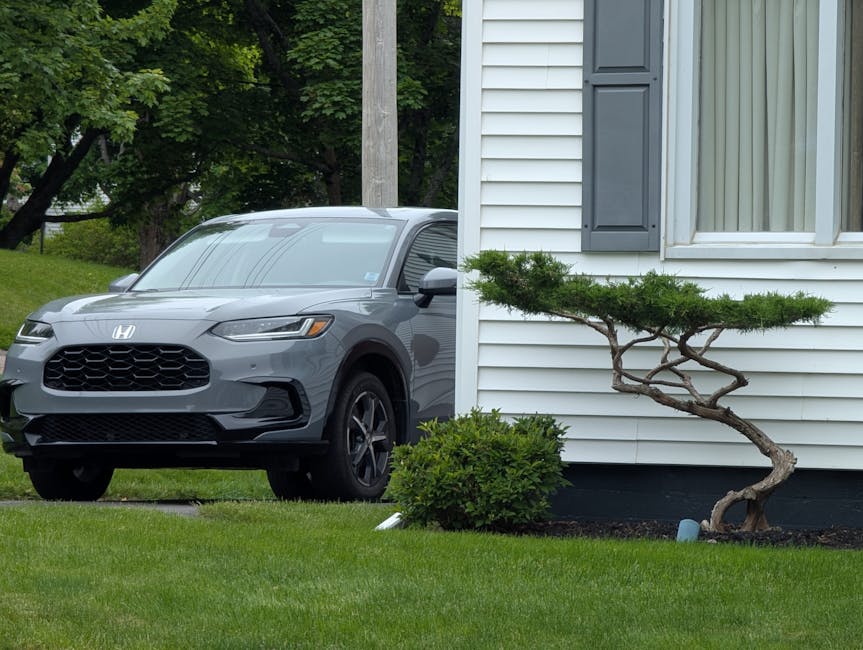Include information from different sources and cite your sources at the end of the article.
Mobile home living presents unique design considerations, especially when it comes to laundry rooms. Space is often at a premium, demanding creative solutions and clever planning. Let’s explore a multitude of small laundry room remodel ideas specifically tailored for mobile homes, ensuring you maximize functionality without sacrificing style. This article will offer not just inspiration but practical advice for creating a laundry space that’s both efficient and aesthetically pleasing.
Understanding the Challenges of Mobile Home Laundry Rooms
Mobile homes, or manufactured homes as they're sometimes referred to, are built to different standards than site-built houses. That makes certain renovations a touch trickier. Typically, you have tighter spaces, potentially different wiring and plumbing setups, and wall construction materials that might not be the same. Plus, ventilation can be a concern, as excessive moisture can be a big issue in a mobile home. Consider these factors early in your planning stage. According to the Manufactured Housing Institute, over 22 million Americans live in manufactured housing, emphasizing the importance of catering to this specific housing segment [1].
- Limited square footage: Every inch counts.
- Potential for moisture build-up: Proper ventilation is a must.
- Unique plumbing and electrical considerations: Get the professionals involved.
- Budget constraints: Being resourceful is key.
Maximizing Space with Clever Layouts
One of the biggest concerns is the space constraint. Think vertical! When planning your remodel, the layout is paramount. Think about how you can use vertical space to your advantage. Wall-mounted shelving, stackable washer and dryer units, and even creating a folding station that can be tucked away when not in use will be a lifesaver. Consider corner shelves – these help utilize otherwise dead space. For example, imagine a narrow laundry space. A side-by-side washer and dryer eats up almost all the floor space, makes maneuvering tough. Stacking them frees up valuable space for storage and movement.
Stackable Washer and Dryer Units: A Must-Have
Stackable units are a game-changer, plain and simple. They instantly double your floor space, allowing room for other essentials like storage cabinets, a folding table, or even a utility sink. Choosing a ventless dryer option can also save space and simplify the installation process, eliminating the need for an external vent. Don't just think about the washer and dryer as appliances; consider them as part of the overall spatial arrangement. Research the dimensions of different stackable units, carefully measuring your existing laundry space, before making a purchase. Remember to consult the manufacturer's specifications for proper installation requirements.
Wall-Mounted Solutions: Think Upwards
Exploit vertical space with wall-mounted shelves and cabinets. Open shelving is great for easily accessible items like detergent, dryer sheets, and stain removers. Cabinets provide a hidden way to store less frequently used items. Magnetic strips can hold things like scissors, cloths or small tools. Install a wall-mounted ironing board that folds away neatly when not in use. Look into hanging drying racks, too. These fold flat against the wall and are perfect for air-drying delicate items.
Multifunctional Furniture: Two Birds, One Stone
Opt for furniture that serves multiple purposes. A folding table that doubles as a storage cabinet, or a rolling cart with drawers, can be moved around as needed. Baskets can be cleverly tucked under shelves. An old trunk can be repurposed as a laundry hamper and side table. It's about being inventive and thinking outside the box to find furniture that maximizes space and minimizes clutter.
Storage Solutions for Tiny Laundry Rooms
Storage is where you can really get creative. Every nook and cranny can be utilized. Aim to make everything organized and accessible. Clutter is the enemy of a small space.
Shelving: The Obvious but Essential Choice
Shelving comes in all shapes, sizes, and materials. Choose shelves that complement the overall aesthetic of your mobile home. Wire shelving is affordable and allows for good airflow, preventing moisture build-up. Wooden shelves offer a warmer, more custom look. Floating shelves can be installed at varying heights to accommodate different items. Remember to consider the weight capacity of the shelves, especially if you plan to store heavy detergents or supplies.
Cabinets: Hidden Storage is Key
Cabinets provide enclosed storage, keeping clutter out of sight. Consider installing cabinets above the washer and dryer or along a wall. Choose cabinets that are the right depth for your needs – shallow cabinets are ideal for storing smaller items, while deeper cabinets can accommodate larger containers. If space is truly limited, consider a tall, narrow linen cabinet to maximize vertical storage.
Baskets and Bins: Organization Made Easy
Baskets and bins are perfect for organizing smaller items. Use them to store detergent pods, dryer sheets, stain removers, and other laundry essentials. Label each basket clearly so you can easily find what you need. Woven baskets add a touch of warmth and texture to the space. Clear plastic bins allow you to see the contents at a glance.
Rolling Carts: Mobility and Convenience
A rolling cart is a versatile addition to any small laundry room. Use it to transport laundry supplies from one area to another, or as a mobile folding station. Choose a cart with drawers or shelves for added storage. Look for carts with locking wheels to prevent them from rolling away unexpectedly.
Optimizing Lighting and Ventilation
Proper lighting and ventilation are paramount. Mobile homes can be prone to moisture issues, so these two factors are non-negotiable.
Natural Light: Let the Sunshine In
If possible, maximize natural light in your laundry room. Natural light makes the space feel brighter and more open. If you have a window, keep it clean and unobstructed. Consider installing a skylight if you have the option.
Artificial Lighting: Brighten Things Up
Supplement natural light with artificial lighting. A bright overhead light is essential for general illumination. Task lighting, such as under-cabinet lights or a swing-arm lamp, can provide focused light for folding and sorting laundry. Consider using LED bulbs for energy efficiency and long life.
Ventilation: Combatting Moisture Build-Up
Proper ventilation is crucial for preventing moisture build-up and mold growth in the laundry room. Make sure your dryer is properly vented to the outside. If you don't have an external vent, consider using a ventless dryer. Install an exhaust fan to remove excess moisture from the air. Open a window or door when possible to allow for natural ventilation.
Aesthetic Considerations: Making it Pretty
Just because it's a laundry room doesn't mean it can't be stylish! A few simple aesthetic touches can make a big difference.
Color Palette: Keep it Light and Bright
Choose a light and bright color palette to make the space feel larger and more open. White, cream, and pastel colors are all good choices. Avoid dark colors, which can make a small space feel even smaller. Use pops of color in accessories, such as baskets, towels, and artwork.
Flooring: Durable and Easy to Clean
Choose flooring that is durable and easy to clean. Vinyl flooring is a popular choice for laundry rooms because it is water-resistant and easy to maintain. Tile is another good option, but it can be more expensive. Consider using a non-slip flooring material to prevent accidents.
Decor: Personalize the Space
Add a few personal touches to make the laundry room feel more inviting. Hang artwork on the walls, display a few potted plants, or add a colorful rug. A few simple decorations can go a long way in making the space feel more like a part of your home.
Cost-Effective Remodeling Tips
Remodeling doesn't have to break the bank. There are plenty of ways to save money without sacrificing quality or style.
DIY Projects: Get Your Hands Dirty
Do-it-yourself projects can save you a lot of money on labor costs. Painting, installing shelves, and assembling furniture are all tasks that you can easily do yourself. Watch online tutorials and consult with home improvement experts to learn new skills and techniques.
Repurpose and Recycle: Think Green
Repurpose old furniture and materials to save money and reduce waste. An old dresser can be transformed into a laundry storage unit. Scrap wood can be used to build shelves. Old containers can be repurposed as storage bins.
Shop Smart: Look for Deals
Shop around for the best deals on materials and appliances. Compare prices at different stores and online retailers. Look for sales, discounts, and clearance items. Consider purchasing used appliances in good condition to save even more money.
Smart Technology Integration
Consider integrating smart technology for added convenience and efficiency.
Smart Washer and Dryer: Convenience at Your Fingertips
Smart washers and dryers can be controlled remotely via a smartphone app. You can start and stop cycles, monitor progress, and receive notifications when the laundry is done. Some models even have features like automatic detergent dispensing and steam cleaning.
Smart Lighting: Energy Efficiency and Ambiance
Install smart lighting in your laundry room to save energy and create a more pleasant atmosphere. Smart bulbs can be controlled remotely via a smartphone app or voice assistant. You can adjust the brightness, color temperature, and even set schedules.
Leak Detection: Prevent Water Damage
Install a leak detection system to prevent water damage in your laundry room. These systems can detect leaks from washing machines, pipes, and other sources. They can automatically shut off the water supply and send you a notification to alert you to the problem.
Common Mistakes to Avoid
Learn from others' mistakes to avoid common pitfalls.
Neglecting Ventilation: Moisture is the Enemy
Neglecting ventilation is one of the most common mistakes in small laundry room remodels. Without proper ventilation, moisture can build up, leading to mold growth and other problems. Make sure your dryer is properly vented to the outside, and install an exhaust fan to remove excess moisture from the air.
Poor Planning: Measure Twice, Cut Once
Poor planning can lead to costly mistakes and delays. Before you start your remodel, carefully measure your laundry room and create a detailed plan. Consider the placement of appliances, storage, and lighting. Make sure you have all the necessary permits and approvals before you start any work.
Ignoring Functionality: Form Follows Function
Don't get so caught up in the aesthetics that you forget about functionality. The laundry room should be a practical and efficient space. Choose appliances and storage solutions that meet your needs and make the space easy to use.
Remodeling a small laundry room in a mobile home presents unique challenges, but with careful planning and creative solutions, you can create a space that is both functional and stylish. By maximizing space, optimizing storage, improving lighting and ventilation, and adding personal touches, you can transform your laundry room into a haven of efficiency and convenience. Remember to consider cost-effective remodeling tips and avoid common mistakes to ensure a successful project. Don't be afraid to consult professionals if you encounter challenges beyond your expertise. After all, you don't want to make expensive mistakes that could have easily been avoided with a little guidance.
By following these guidelines, you’re one step closer to a streamlined and efficient mobile home laundry area, making washday less of a chore. Good luck!
Citations
[1] Manufactured Housing Institute. (n.d.). Manufactured Housing Facts. Retrieved from https://www.manufacturedhousing.org/





